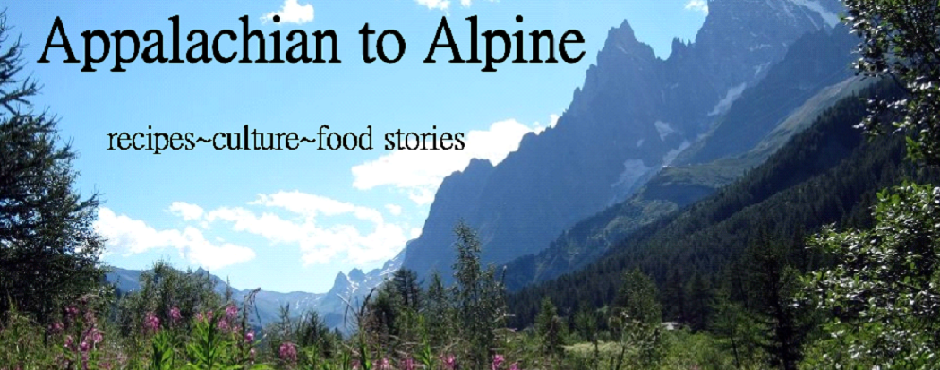Polenta, I love you. Yes, I know that I declare my undying love for every food I write about. It is because there is so much great food in the world. But polenta holds a special place in my heart (and stomach).
Before I moved here, I thought polenta was the stuff that came in tubes in American grocery stores, flavored with things like sun dried tomatoes and sage. I now shudder at the blasphemous gook posing as the food I have come to love in my time living in the Italian Alps.
Polenta, real polenta, is great for so many reasons. It’s easy and just about impossible to screw up, it’s relatively healthy, it’s cheap, it’s gluten free (a blessing for me, since I discovered that I am gluten intolerant). There are about 100 ways to prepare it, and it just tastes so damned good. But above all, it brings people together. You can’t really prepare polenta for one. Or even two. Heck, even polenta for only four people doesn’t make much sense. Polenta is best made in a big pot, stirred by a big wooden spoon, and served to an overcrowded table of your family and best friends. It is a food that brings people together, that creates community.
I love polenta, but evermore so, I love how to brings a community to share a table.
If you are reading this from the US, I don’t really know where you can get polenta meal. Stone ground yellow cornmeal probably works, but you’ll have to do your own research regarding what you have where you live. My favorite kind of polenta is polenta taragna, which is about 70% polenta meal and 30% coarsely ground buckwheat.
| Polenta Taragna (polenta with buckwheat) |
Making polenta is easy. Basically you want 4 parts water for 1 part polenta, (though some call for 3 parts water for 1 part polenta) and about 100 g polenta meal per person. Cook on a stovetop if you must, but it’s tastier when cooked over an open fire.
Ingredients for 5 servings:
500 g stone ground polenta (little bit over a pound)
2 liters of water (little over 2 quarts)
spoonful of coarse salt
Using a big pot, salt your water and bring to a boil. When it reaches a boil, slowly drizzle in your polenta, whisking all the while. Using a whisk is important so that the polenta doesn’t clump up. It’ll be liquidly and suddenly it will turn quite thick. Keeping your polenta on low-medium flame, switch to a big wooden spoon or a big stick and start stirring. You’ll want to stir pretty much constantly for about an hour. This is why it is great to do this at a party, because people can take turns stirring.
A note on stirring: There is a particular way to stir polenta. I think it would be more accurate to call it a ‘turn’ rather than a ‘stir’, actually. To make a turn, I start at ‘9 o’clock’ in the pot, and stir clockwise all the way around the edge, and when I get back to where I started I fold the polenta into itself. Sounds complicated, but it’s not. Here is a video of how to stir polenta:
The polenta is going to get really really thick. There might be some crust forming around the edge of the pot, and that’s actually a good sign. Keep stirring. When an hour has passed, it’s done. At this point you have some choices. You can make your polenta ‘grassa’ by stirring in A LOT of butter at the end. Like maybe 125 g for this amount of polenta. Or you could make ‘polenta concia’ which is how we usually eat polenta in Valle d’Aosta. This is when you stir in chopped up Fontina cheese at the end (about 250g/half a pound for this recipe), along with some butter. Real polenta concia is then baked in the oven in individual terracotta dishes until it is brown and bubbly, but most people at home skip this step. You can also skip the butter and cheese if you like, and skip straight to the toppings. Some tasty toppings include whole milk, sauteed mushrooms, salsiccia (Italian sausage), fonduta (cheese sauce), or with beans.
 |
| Fontina from my neighbor’s raw milk vending machine |
 |
| Polenta on a wooden platter ready to be served. See how thick it is? |
 |
| I love eating the polenta crust left in the pot after dumping the polenta out! |
Eat accompanied by simple and strong red wine. If you have leftover polenta, you can slice it and pan fry it in some butter for breakfast. I recommend drizzling the golden brown crispy breakfast polenta with maple syrup. Definitely an American twist on an Italian tradition, but it is seriously delicious.
In my next posts, I will write about polenta toppings…. there are so many delicious options!



Fatal error: Uncaught Error: Call to undefined function ereg() in /home/logcabincooking/public_html/appalachiantoalpine.com/wp-content/themes/canvas/includes/theme-comments.php:63 Stack trace: #0 /home/logcabincooking/public_html/appalachiantoalpine.com/wp-content/themes/canvas/includes/theme-comments.php(19): the_commenter_link() #1 /home/logcabincooking/public_html/appalachiantoalpine.com/wp-includes/class-walker-comment.php(174): custom_comment(Object(WP_Comment), Array, 1) #2 /home/logcabincooking/public_html/appalachiantoalpine.com/wp-includes/class-wp-walker.php(145): Walker_Comment->start_el('', Object(WP_Comment), 1, Array) #3 /home/logcabincooking/public_html/appalachiantoalpine.com/wp-includes/class-walker-comment.php(135): Walker->display_element(Object(WP_Comment), Array, '5', 0, Array, '') #4 /home/logcabincooking/public_html/appalachiantoalpine.com/wp-includes/class-wp-walker.php(370): Walker_Comment->display_element(Object(WP_Comment), Array, '5', 0, Array, '') #5 /home/logcabincooking/public_html/appalachi in /home/logcabincooking/public_html/appalachiantoalpine.com/wp-content/themes/canvas/includes/theme-comments.php on line 63